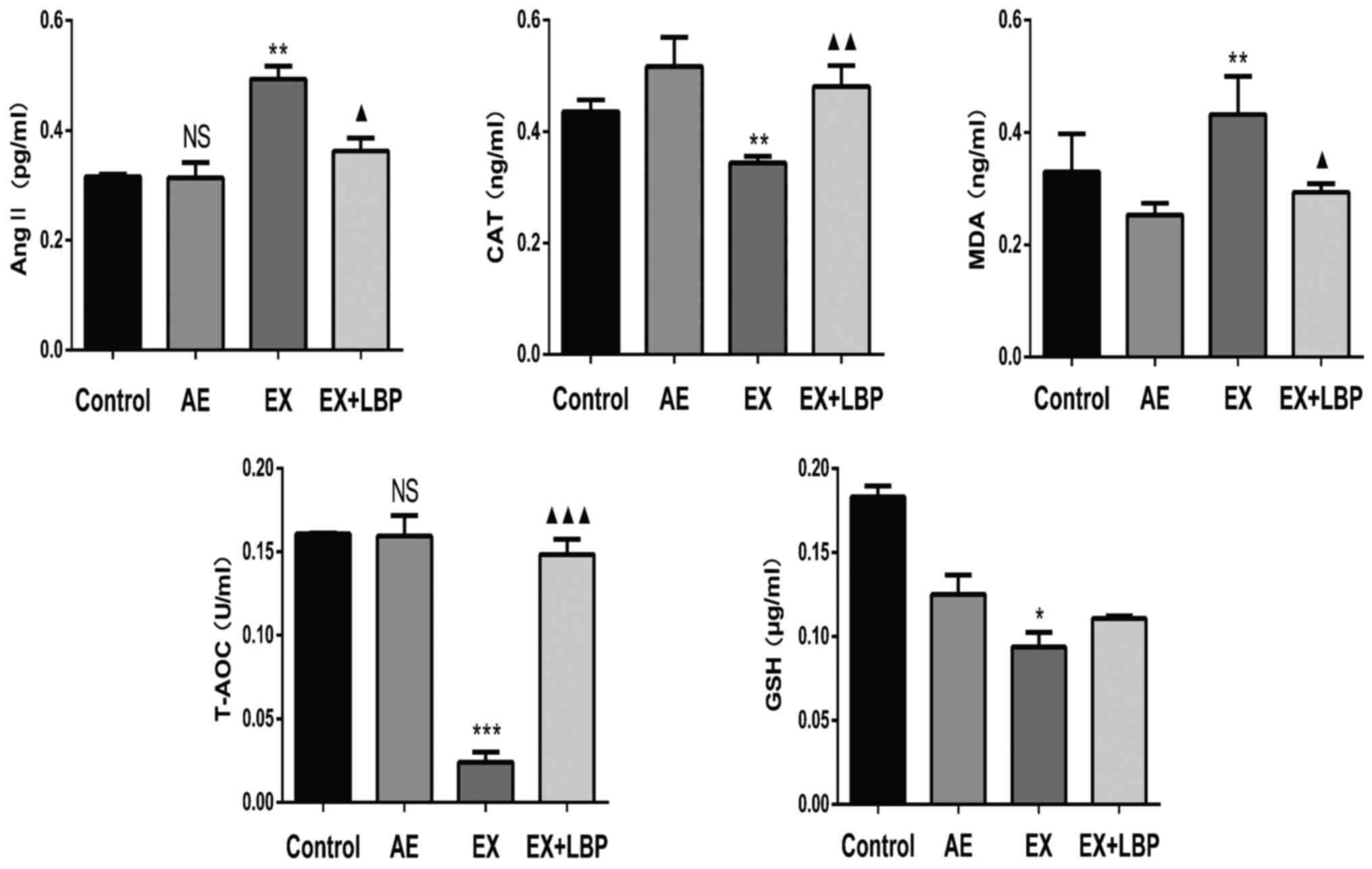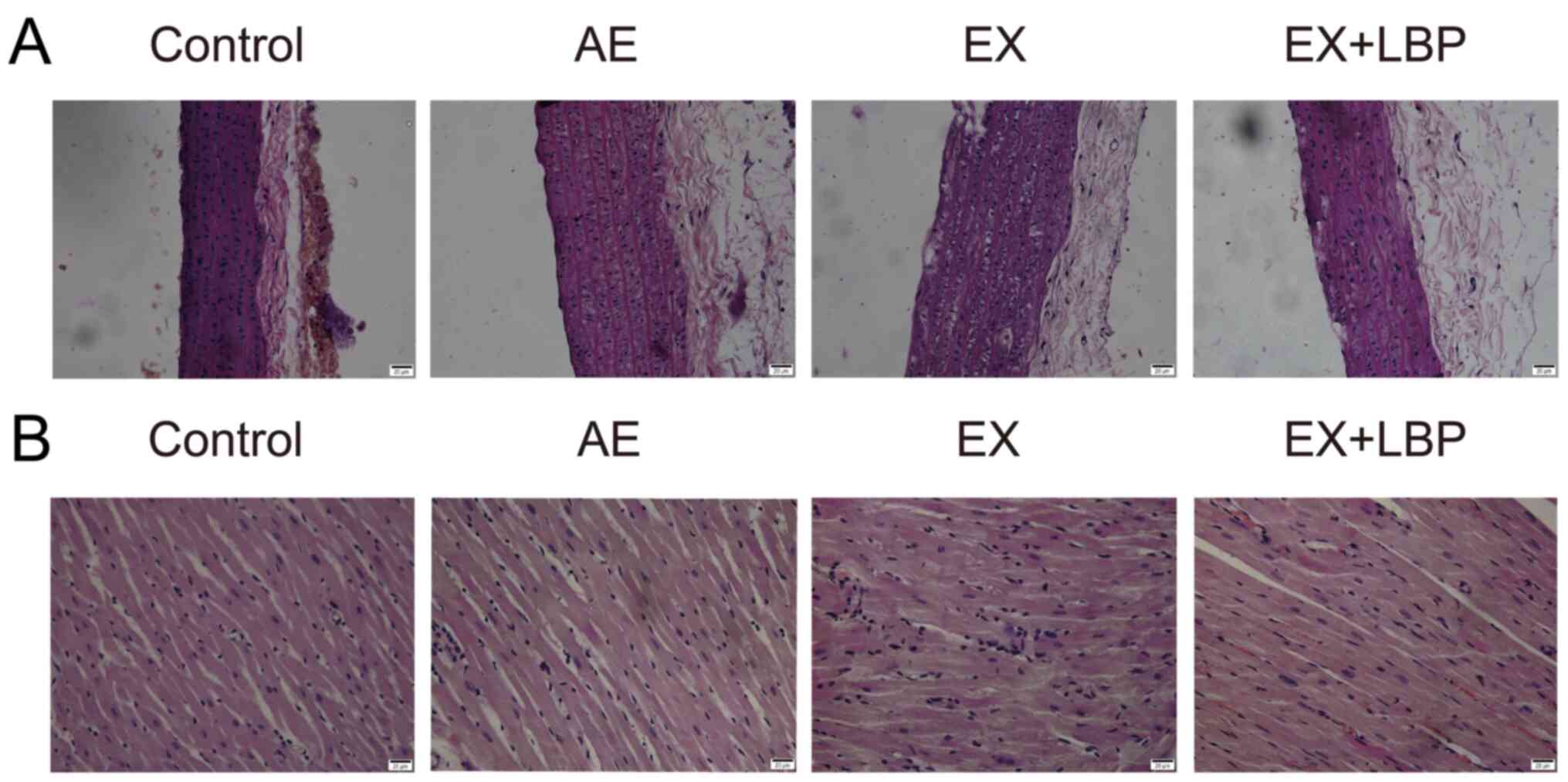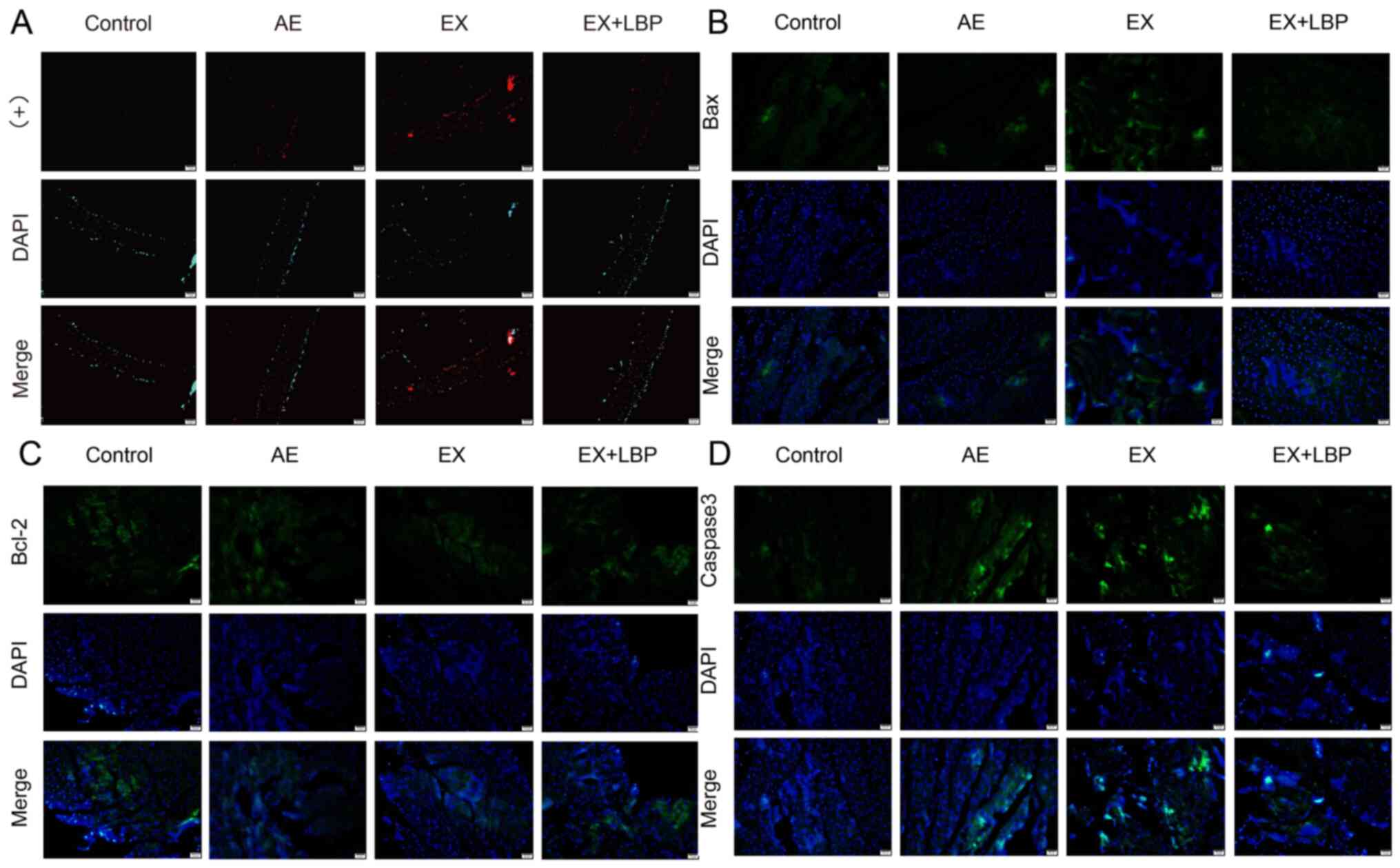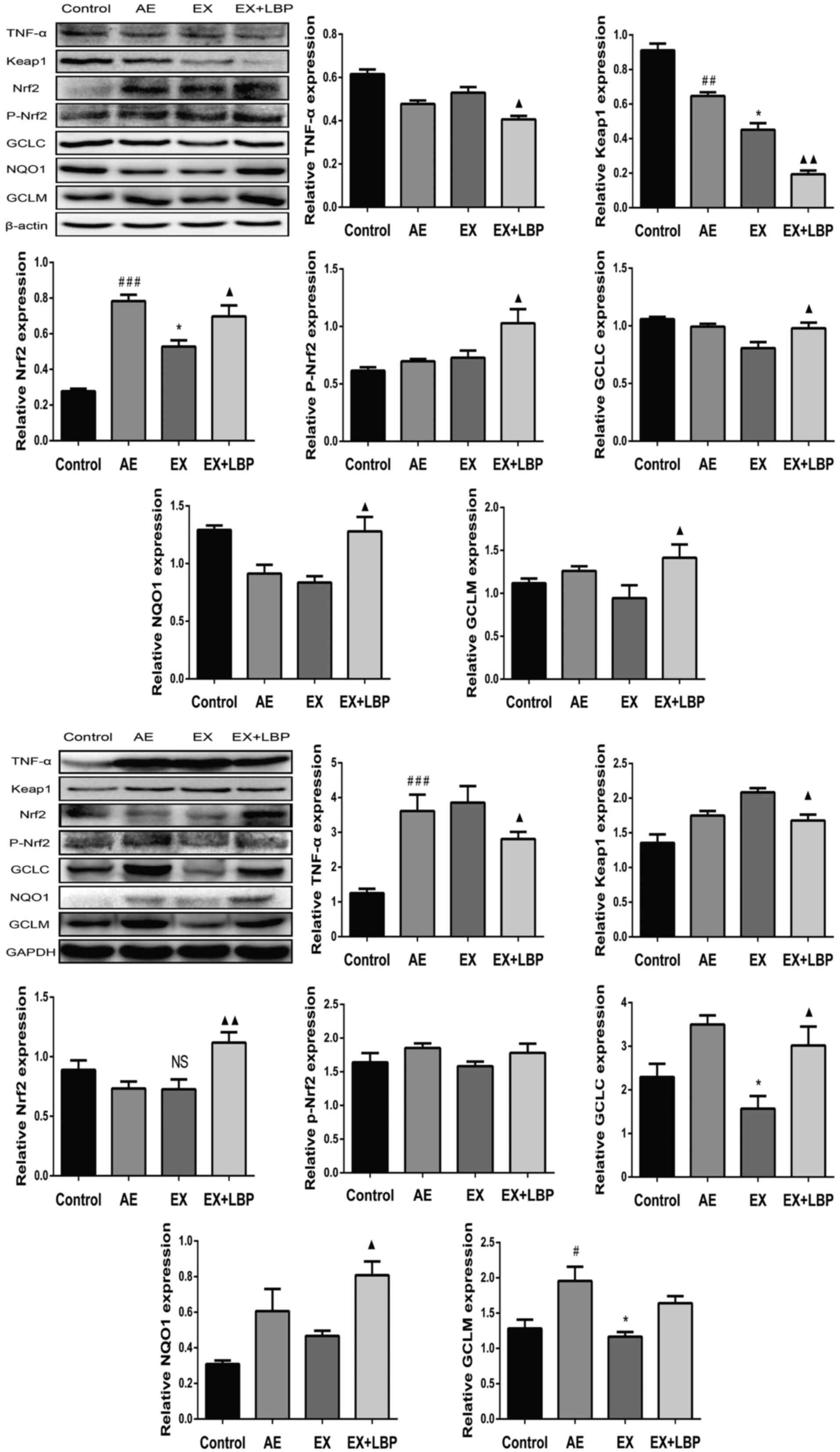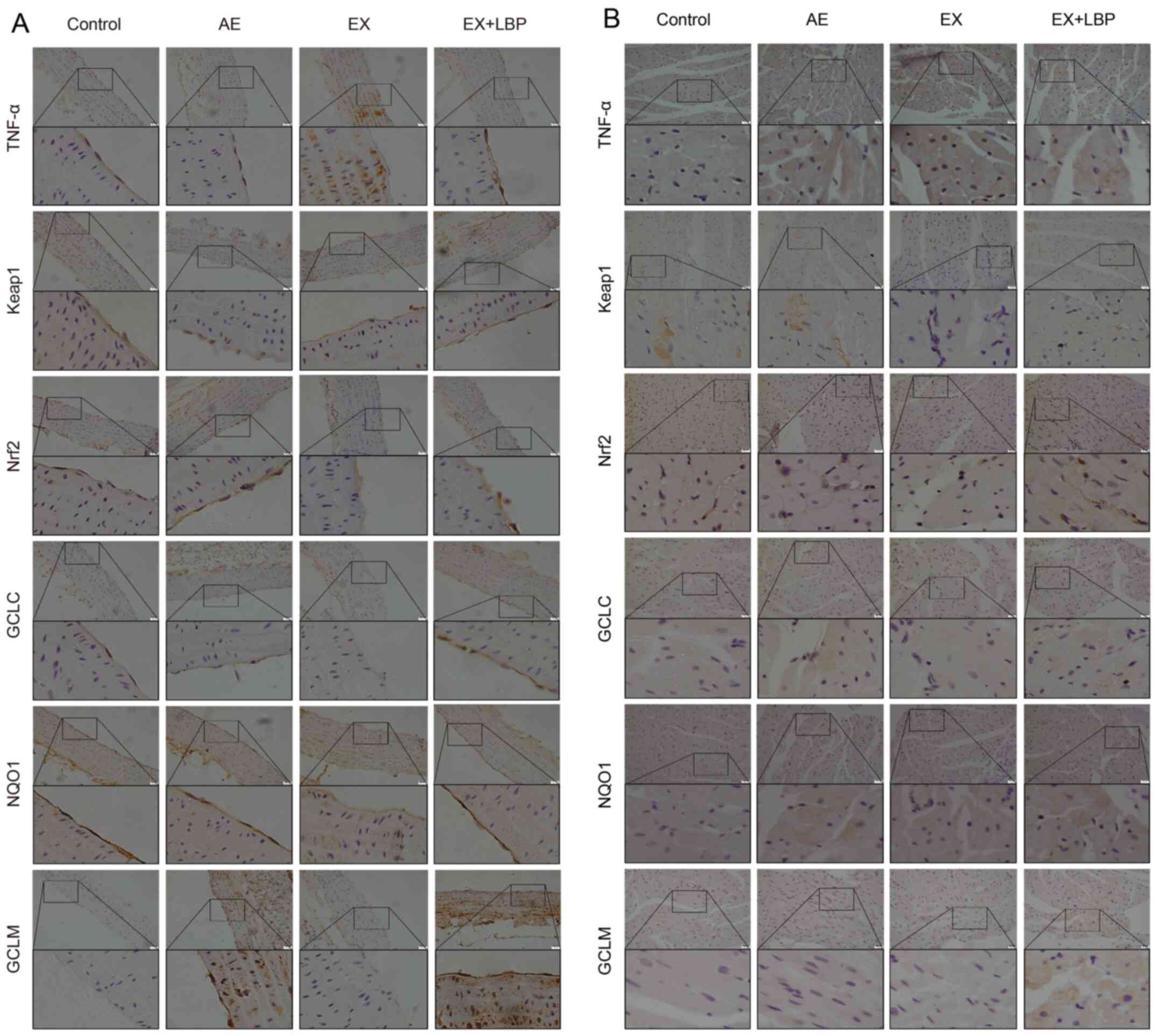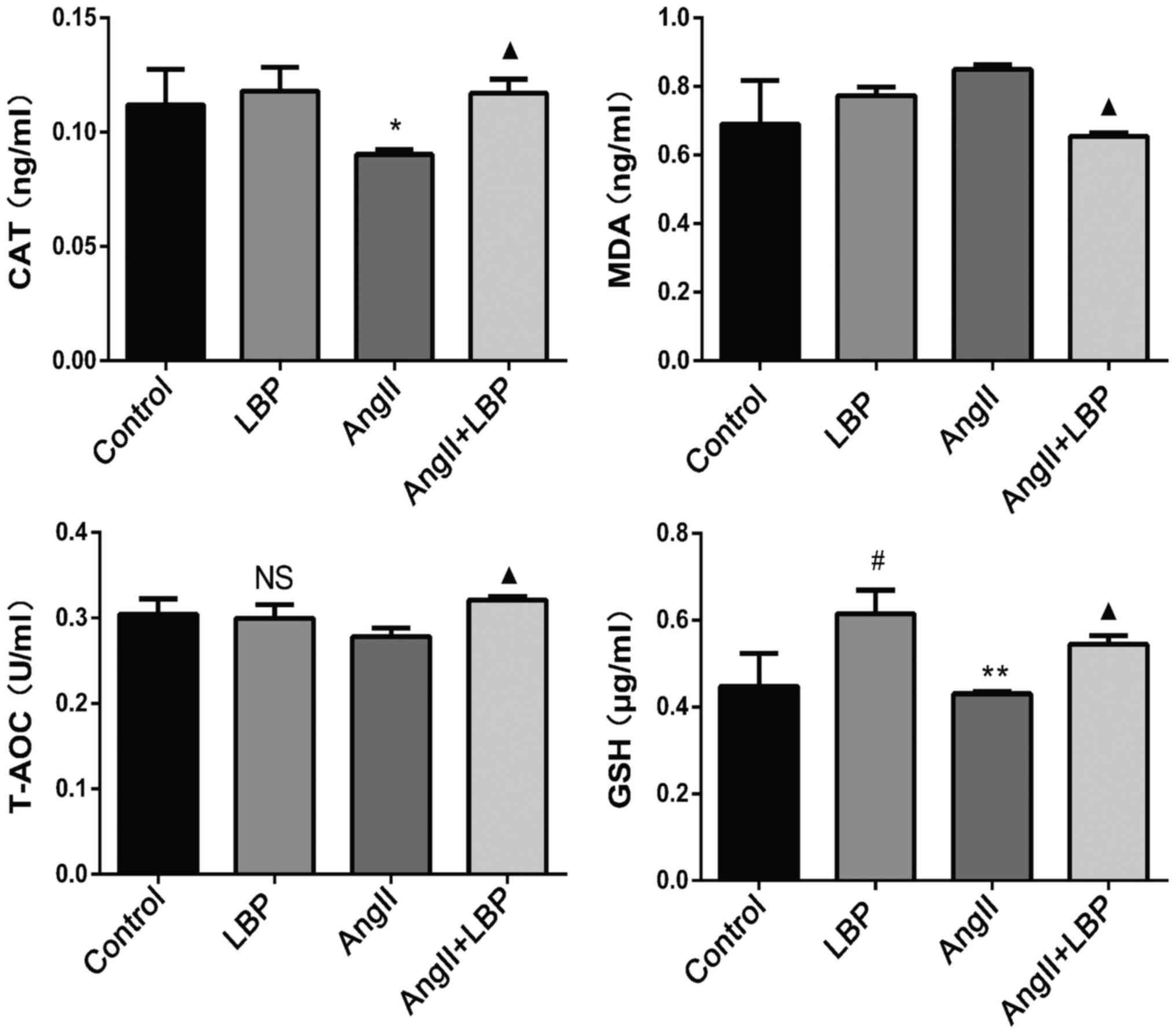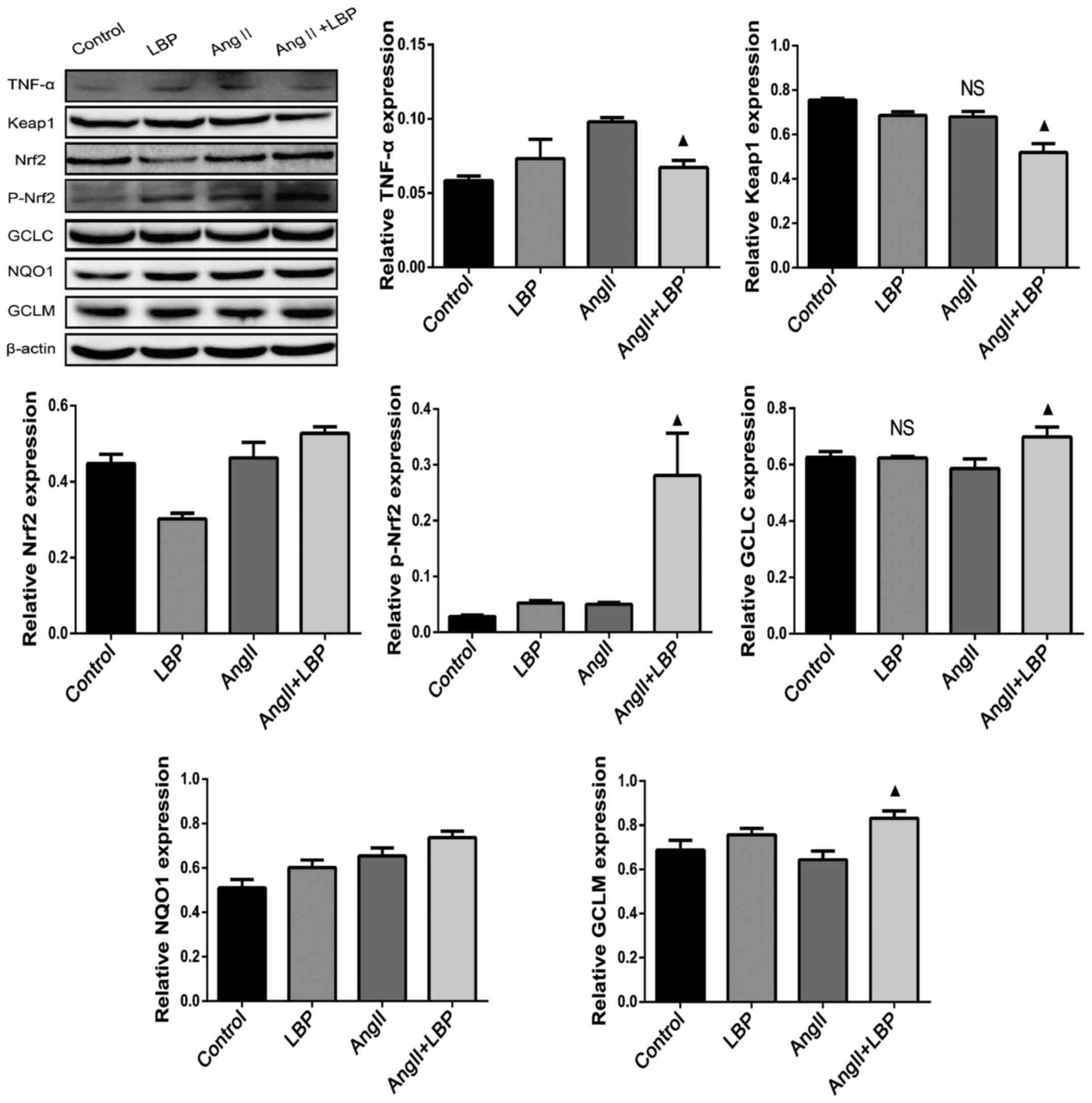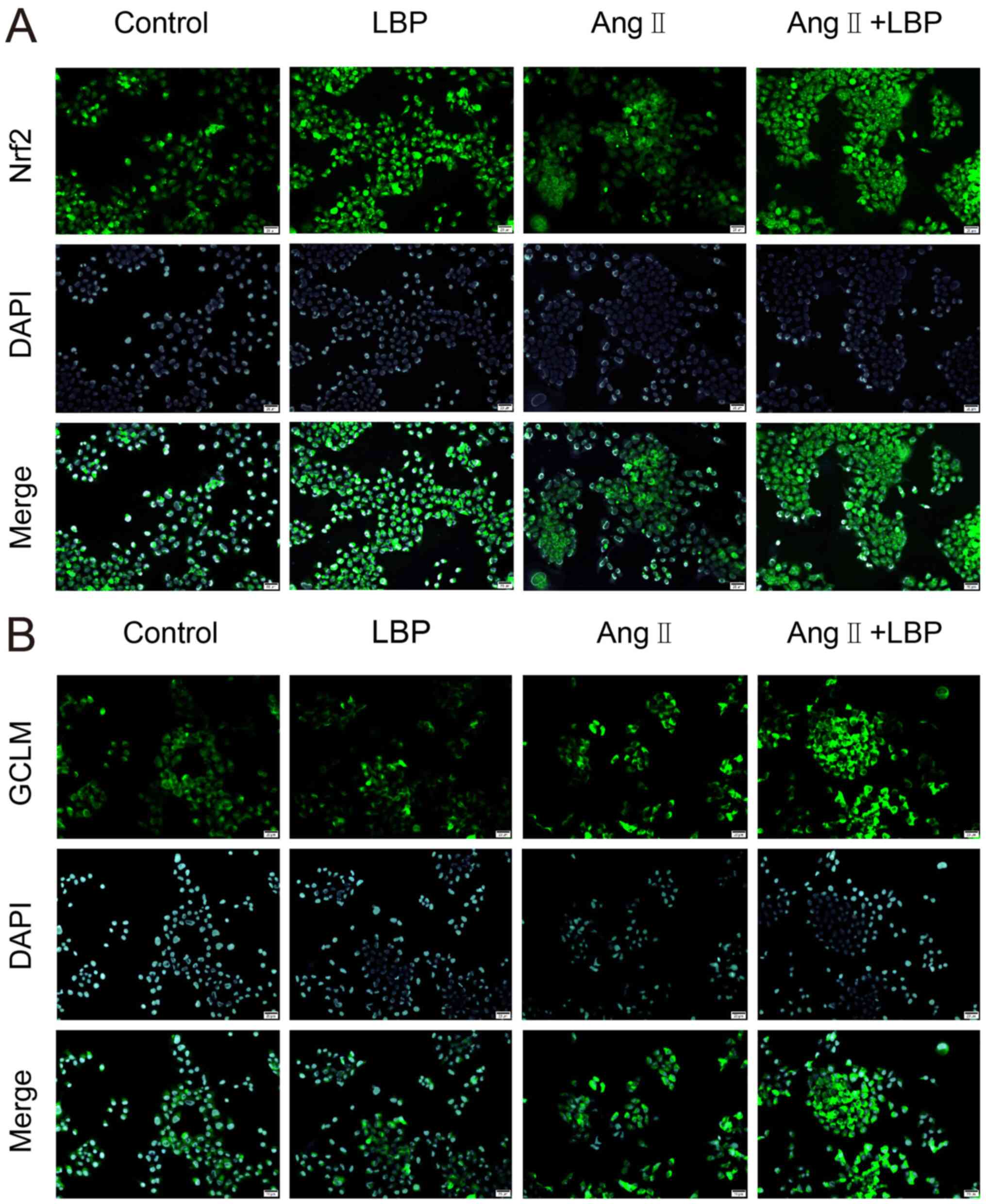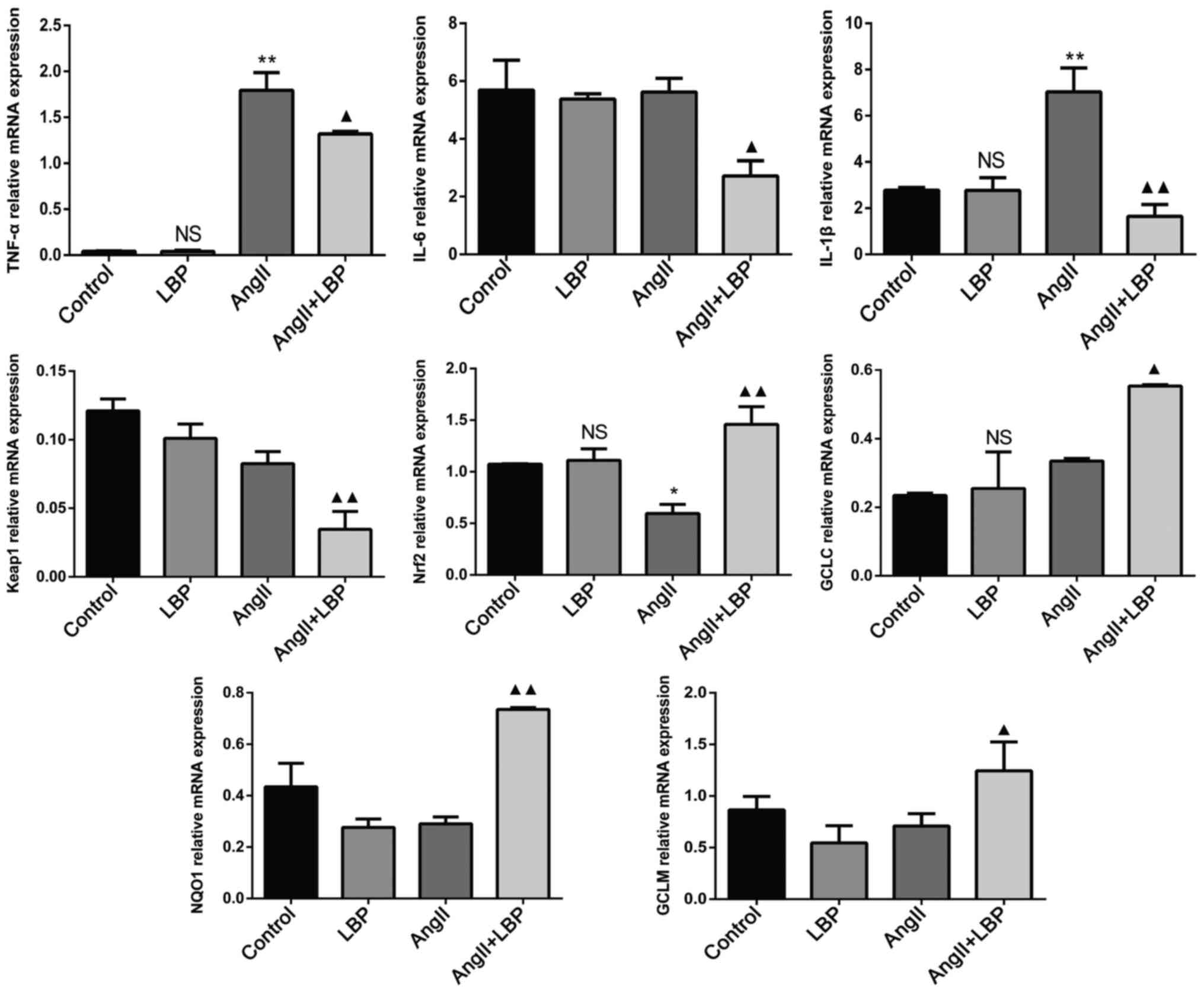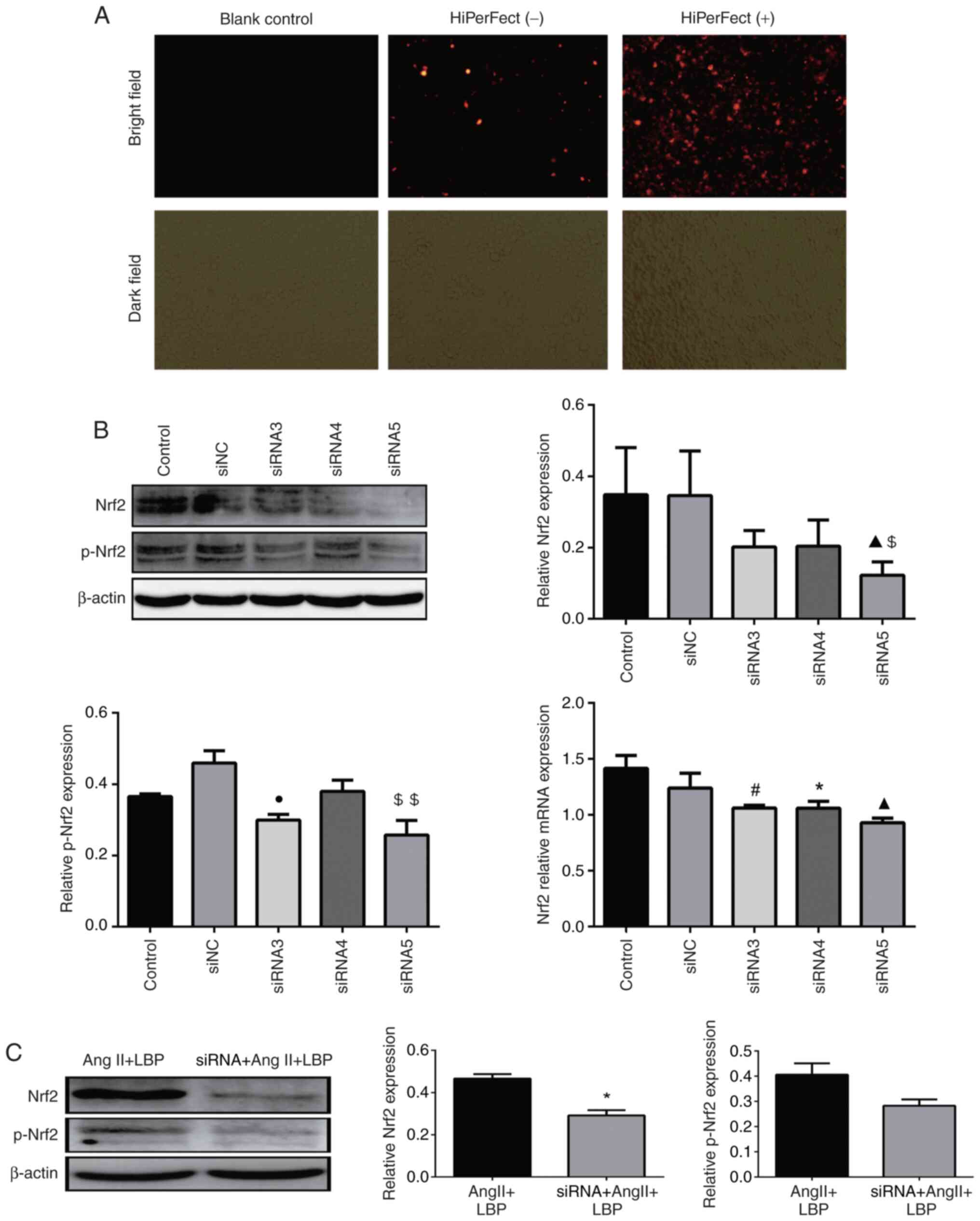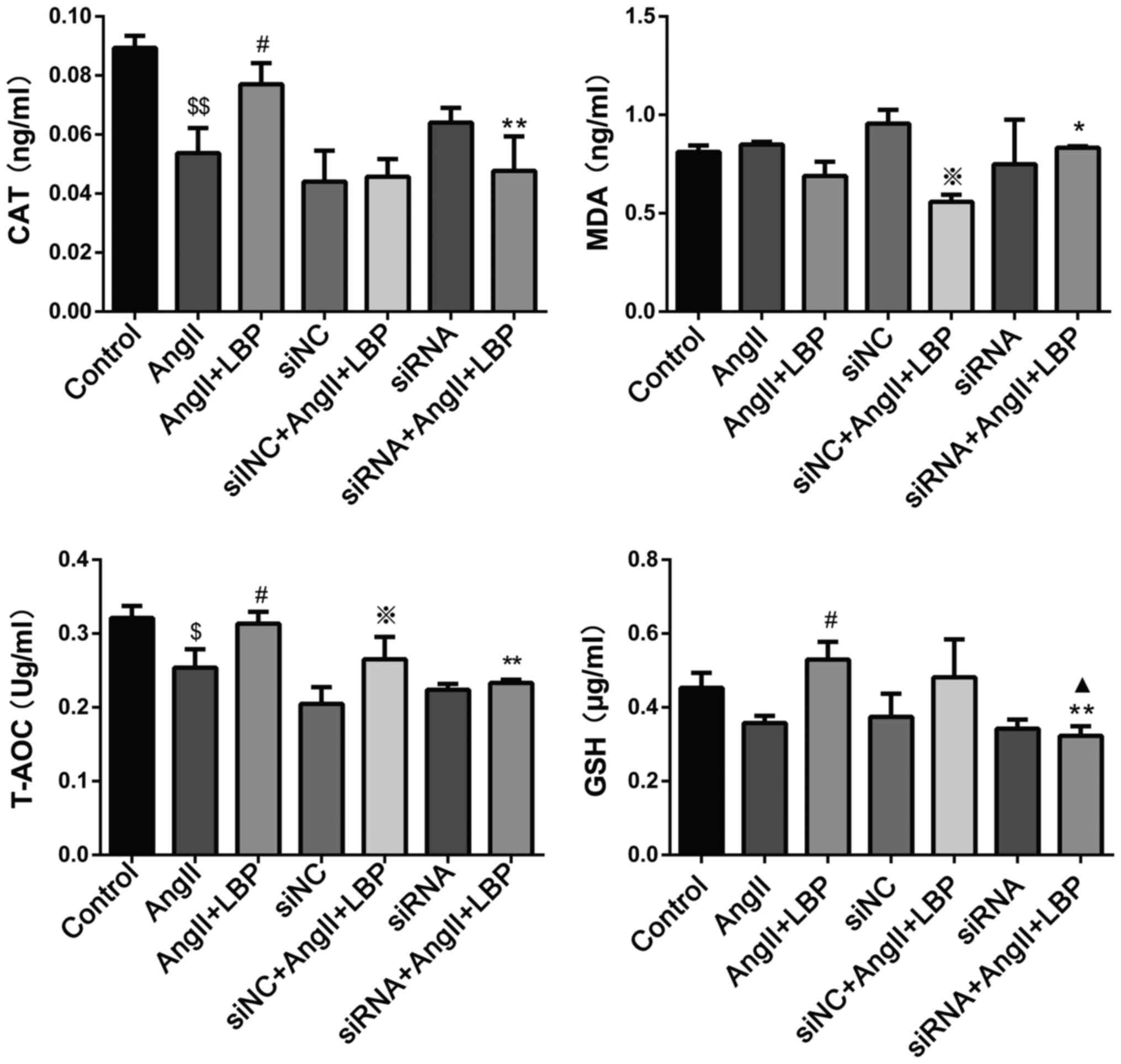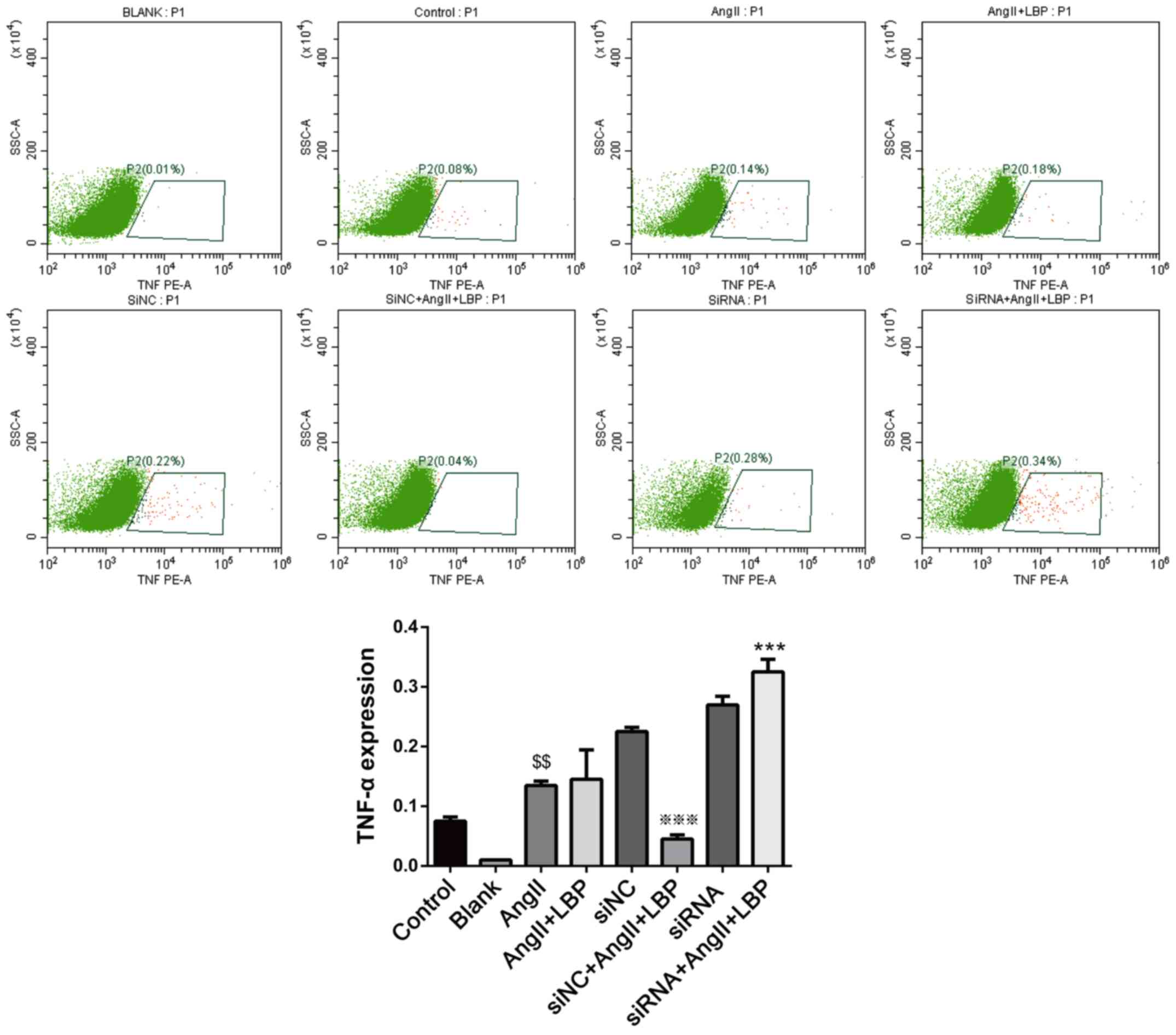|
1
|
Schmied C, Loidl M, Rossi V, La Puente de
Battre MD, Reich B, Josef N and Niederseer D: Dose-response
relationship of active commuting to work: Results of the GISMO
study. Scand J Med Sci Sports. 30 (Suppl 1):50–58. 2020. View Article : Google Scholar : PubMed/NCBI
|
|
2
|
Fitze DP, Franchi M, Popp WL, Ruoss S,
Catuogno S, Camenisch K, Lehmann D, Schmied CM, Niederseer D, Frey
WO, et al: Concentric and eccentric pedaling-type interval exercise
on a soft robot for stable coronary artery disease patients: Toward
a personalized protocol. JMIR Res Protoc. 8:e109702019. View Article : Google Scholar : PubMed/NCBI
|
|
3
|
Di Meo S, Napolitano G and Venditti P:
Mediators of physical activity protection against ROS-linked
skeletal muscle damage. Int J Mol Sci. 20:30242019. View Article : Google Scholar : PubMed/NCBI
|
|
4
|
Liu B, Liu W, Liu P, Liu X, Song X,
Hayashi T, Onodera S and Ikejima T: Silibinin alleviates the
learning and memory defects in overtrained rats accompanying
reduced neuronal apoptosis and senescence. Neurochem Res.
44:1818–1829. 2019. View Article : Google Scholar : PubMed/NCBI
|
|
5
|
Moretti R and Caruso P: The controversial
role of homocysteine in neurology: From labs to clinical practice.
Int J Mol Sci. 20:2312019. View Article : Google Scholar : PubMed/NCBI
|
|
6
|
Koller A, Szenasi A, Dornyei G, Kovacs N,
Lelbach A and Kovacs I: Coronary microvascular and cardiac
dysfunction due to homocysteine pathometabolism; a complex
therapeutic design. Curr Pharm Des. 24:2911–2920. 2018. View Article : Google Scholar : PubMed/NCBI
|
|
7
|
Li X, Hou J, Du J, Feng J, Yang Y, Shen Y,
Chen S, Feng J, Yang D, Li D, et al: Potential protective mechanism
in the cardiac microvascular injury. Hypertension. 72:116–127.
2018. View Article : Google Scholar : PubMed/NCBI
|
|
8
|
Stancu CS, Toma L and Sima AV: Dual role
of lipoproteins in endothelial cell dysfunction in atherosclerosis.
Cell Tissue Res. 349:433–446. 2012. View Article : Google Scholar : PubMed/NCBI
|
|
9
|
Karan A, Bhakkiyalakshmi E, Jayasuriya R,
Sarada DV and Ramkumar KM: The pivotal role of nuclear factor
erythroid 2-related factor 2 in diabetes-induced endothelial
dysfunction. Pharmacol Res. 153:1046012020. View Article : Google Scholar : PubMed/NCBI
|
|
10
|
Li LH, Peng WN, Deng Y, Li JJ and Tian XR:
Action of trichostatin A on Alzheimer's disease-like pathological
changes in SH-SY5Y neuroblastoma cells. Neural Regen Res.
15:293–301. 2020. View Article : Google Scholar : PubMed/NCBI
|
|
11
|
Fão L, Mota SI and Rego AC: Shaping the
Nrf2-ARE-related pathways in Alzheimer's and Parkinson's diseases.
Ageing Res Rev. 54:1009422019. View Article : Google Scholar
|
|
12
|
Zheng D, Liu Z, Zhou Y, Hou N, Yan W, Qin
Y, Ye Q, Cheng X, Xiao Q, Bao Y, et al: Urolithin B, a gut
microbiota metabolite, protects against myocardial
ischemia/reperfusion injury via p62/Keap1/Nrf2 signaling pathway.
Pharmacol Res. 153:1046552020. View Article : Google Scholar : PubMed/NCBI
|
|
13
|
Li M, Huang W, Jie F, Wang M, Zhong Y,
Chen Q and Lu B: Discovery of Keap1-Nrf2 small-molecule inhibitors
from phytochemicals based on molecular docking. Food Chem Toxicol.
133:1107582019. View Article : Google Scholar : PubMed/NCBI
|
|
14
|
Zimta AA, Cenariu D, Irimie A, Magdo L,
Nabavi SM, Atanasov AG and Berindan-Neagoe I: The role of Nrf2
activity in cancer development and progression. Cancers (Basel).
11:17552019. View Article : Google Scholar : PubMed/NCBI
|
|
15
|
Cui B, Zhang S, Wang Y and Guo Y: Farrerol
attenuates β-amyloid-induced oxidative stress and inflammation
through Nrf2/Keap1 pathway in a microglia cell line. Biomed
Pharmacother. 109:112–119. 2019. View Article : Google Scholar : PubMed/NCBI
|
|
16
|
Wang Y, Han Q, Bai F, Luo Q, Wu M, Song G,
Zhang H and Wang Y: The assembly and antitumor activity of
lycium barbarum polysaccharide-platinum-based conjugates. J
Inorg Biochem. 205:1110012020. View Article : Google Scholar : PubMed/NCBI
|
|
17
|
Lakshmanan Y, Wong FSY, Zuo B, So KF, Bui
BV and Chan HH: Posttreatment intervention with Lycium
Barbarum polysaccharides is neuroprotective in a rat model of
chronic ocular hypertension. Invest Ophthalmol Vis Sci.
60:4606–4618. 2019. View Article : Google Scholar : PubMed/NCBI
|
|
18
|
Zhang L, Gao X, Qin Z, Shi X, Xu K, Wang
S, Tang M, Wang W, Gao S, Zuo L, et al: USP15 participates in
DBP-induced testicular oxidative stress injury through regulating
the Keap1/Nrf2 signaling pathway. Sci Total Environ.
783:1468982021. View Article : Google Scholar : PubMed/NCBI
|
|
19
|
Lou L, Chen G, Zhong B and Liu F:
Lycium barbarum polysaccharide induced apoptosis and
inhibited proliferation in infantile hemangioma endothelial cells
via down-regulation of pI3K/AKT signaling pathway. Biosci Rep. Aug
19–2019.(Epub ahead of print). doi: 10.1042/BSR20191182. View Article : Google Scholar
|
|
20
|
Ding Y, Yan Y, Chen D, Ran L, Mi J, Lu L,
Jing B, Li X, Zeng X and Cao Y: Modulating effects of
polysaccharides from the fruits of Lycium barbarum on the
immune response and gut microbiota in cyclophosphamide-treated
mice. Food Funct. 10:3671–3683. 2019. View Article : Google Scholar : PubMed/NCBI
|
|
21
|
Kwok SS, Bu Y, Lo AC, Chan TC, So KF, Lai
JS and Shih KC: A systematic review of potential therapeutic use of
Lycium Barbarum polysaccharides in disease. BioMed Res Int.
2019:46157452019. View Article : Google Scholar : PubMed/NCBI
|
|
22
|
Wu Q, Liu LT, Wang XY, Lang ZF, Meng XH,
Guo SF, Yan B, Zhan T, Zheng HZ and Wang HW: Lycium barbarum
polysaccharides attenuate kidney injury in septic rats by
regulating Keap1-Nrf2/ARE pathway. Life Sci. 242:1172402020.
View Article : Google Scholar : PubMed/NCBI
|
|
23
|
Zhu W, Zhou S, Liu J, McLean RJC and Chu
W: Prebiotic, immuno-stimulating and gut microbiota-modulating
effects of Lycium barbarum polysaccharide. Biomed
Pharmacother. 121:1095912020. View Article : Google Scholar : PubMed/NCBI
|
|
24
|
Ni H, Wang G, Xu Y, Gu X, Sun C and Li H:
Lycium barbarum polysaccharide alleviates IL-1β-evoked
chondrogenic ATDC5 cell inflammatory injury through mediation of
microRNA-124. Artif Cells Nanomed Biotechnol. 47:4046–4052. 2019.
View Article : Google Scholar : PubMed/NCBI
|
|
25
|
Song Q, Zhou ZJ, Cai S, Chen Y and Chen P:
Oxidative stress links the tumour suppressor p53 with cell
apoptosis induced by cigarette smoke. Int J Environ Health Res. Apr
7–2021.(Epub ahead of print). doi: 10.1080/09603123.2021.1910211.
View Article : Google Scholar : PubMed/NCBI
|
|
26
|
Jie YK, Cheng CH, Wang LC, Ma HL, Deng YQ,
Liu GX, Feng J, Guo ZX and Ye LT: Hypoxia-induced oxidative stress
and transcriptome changes in the mud crab (Scylla
paramamosain). Comp Biochem Physiol C Toxicol Pharmacol.
245:1090392021. View Article : Google Scholar : PubMed/NCBI
|
|
27
|
Thomas DP and Marshall KI: Effects of
repeated exhaustive exercise on myocardial subcellular membrane
structures. Int J Sports Med. 9:257–260. 1988. View Article : Google Scholar : PubMed/NCBI
|
|
28
|
Livak KJ and Schmittgen TD: Analysis of
relative gene expression data using real-time quantitative PCR and
the 2(−ΔΔC(T)) method. Methods. 25:402–408. 2001. View Article : Google Scholar : PubMed/NCBI
|
|
29
|
Luca M and Luca A: Oxidative
stress-related endothelial damage in vascular depression and
vascular cognitive impairment: beneficial effects of aerobic
physical exercise. Oxid Med Cell Longev. 2019:80670452019.
View Article : Google Scholar : PubMed/NCBI
|
|
30
|
Zhang X, Wang Y, Zhao R, Hu X, Zhang B, Lv
X, Guo Z, Zhang Z, Yuan J, Chu X, et al: Folic acid supplementation
suppresses sleep deprivation-induced telomere dysfunction and
senescence-associated secretory phenotype (SASP). Oxid Med Cell
Longev. 2019:45696142019. View Article : Google Scholar : PubMed/NCBI
|
|
31
|
Kura B, Szeiffova Bacova B, Kalocayova B,
Sykora M and Slezak J: Oxidative stress-responsive MicroRNAs in
heart injury. Int J Mol Sci. 21:3582020. View Article : Google Scholar : PubMed/NCBI
|
|
32
|
Xiang W, Wang L, Cheng S, Zhou Y and Ma L:
Protective effects of α-lipoic acid on vascular oxidative stress in
rats with hyperuricemia. Curr Med Sci. 39:920–928. 2019. View Article : Google Scholar : PubMed/NCBI
|
|
33
|
Mizumura K, Maruoka S, Shimizu T and Gon
Y: Role of Nrf2 in the pathogenesis of respiratory diseases. Respir
Investig. 58:28–35. 2020. View Article : Google Scholar : PubMed/NCBI
|
|
34
|
Luo DD, Chen JF, Liu JJ, Xie JH, Zhang ZB,
Gu JY, Zhuo JY, Huang S, Su ZR and Sun ZH: Tetrahydrocurcumin and
octahydrocurcumin, the primary and final hydrogenated metabolites
of curcumin, possess superior hepatic-protective effect against
acetaminophen-induced liver injury: Role of CYP2E1 and Keap1-Nrf2
pathway. Food Chem Toxicol. 123:349–362. 2019. View Article : Google Scholar : PubMed/NCBI
|
|
35
|
Pop C, Berce C, Ghibu S, Scurtu I, Sorițău
O, Login C, Kiss B, Ștefan MG, Fizeșan I, Silaghi H, et al: Effects
of Lycium barbarum L. polysaccharides on inflammation and
oxidative stress markers in a pressure overload-induced heart
failure rat model. Molecules. 25:4662020. View Article : Google Scholar : PubMed/NCBI
|
|
36
|
Pan H, Shi Z, Yang TG, Yu LM and Ai-Li Xu
AL: The protective effects of Lycium barbarum
polysaccharides on retinal neurons in diabetic rats and its
mechanism. Zhongguo Ying Yong Sheng Li Xue Za Zhi. 35:55–59.
2019.(In Chinese). PubMed/NCBI
|
|
37
|
Varoni MV, Pasciu V, Gadau SD, Baralla E,
Serra E, Palomba D and Demontis MP: Possible antioxidant effect of
Lycium barbarum polysaccharides on hepatic cadmium-induced
oxidative stress in rats. Environ Sci Pollut Res Int. 24:2946–2955.
2017. View Article : Google Scholar : PubMed/NCBI
|
|
38
|
Chen Y, Zeng M, Zhang Y, Guo H, Ding W and
Sun T: Nlrp3 deficiency alleviates angiotensin II-induced
cardiomyopathy by inhibiting mitochondrial dysfunction. Oxid Med
Cell Longev. 2021:66791002021. View Article : Google Scholar : PubMed/NCBI
|
|
39
|
Kim HJ, Sujiwo J, Kim HJ and Jang A:
Effects of dipping chicken breast meat inoculated with Listeria
monocytogenes in lyophilized scallion, garlic, and kiwi extracts on
its physicochemical quality. Food Sci Anim Resour. 39:418–429.
2019. View Article : Google Scholar : PubMed/NCBI
|
|
40
|
Lee SY and Hur SJ: Effect of treatment
with peptide extract from beef myofibrillar protein on oxidative
stress in the brains of spontaneously hypertensive rats. Foods.
8:4552019. View Article : Google Scholar : PubMed/NCBI
|
|
41
|
El-Saka MH, Madi NM, Ibrahim RR, Alghazaly
GM, Elshwaikh S and El-Bermawy M: The ameliorative effect of
angiotensin 1-7 on experimentally induced-preeclampsia in rats:
Targeting the role of peroxisome proliferator-activated receptors
gamma expression and asymmetric dimethylarginine. Arch Biochem
Biophys. 671:123–129. 2019. View Article : Google Scholar : PubMed/NCBI
|
|
42
|
Qin F, Xu MX, Wang ZW, Han ZN, Dong YN and
Zhao JX: Effect of aerobic exercise and different levels of fine
particulate matter (pM2.5) on pulmonary response in Wistar rats.
Life Sci. 254:1173552020. View Article : Google Scholar : PubMed/NCBI
|
|
43
|
Mohammadjafari H, Arazi H, Nemati N,
Bagherpoor T and Suzuki K: Acute effects of resistance exercise and
the use of GH or IGF-1 hormones on oxidative stress and antioxidant
markers in bodybuilders. Antioxidants. 8:5872019. View Article : Google Scholar : PubMed/NCBI
|
|
44
|
Zhou L, Wu CQ, Luo YW, Liao MY and Sun ZY:
Studies on the characteristics and mechanisms of testicular
toxicity induced by hydroxyurea. Toxicol Mech Methods. 25:396–401.
2015. View Article : Google Scholar : PubMed/NCBI
|
|
45
|
Estaquier J, Vallette F, Vayssiere JL and
Mignotte B: The mitochondrial pathways of apoptosis. Adv Exp Med
Biol. 942:157–183. 2012. View Article : Google Scholar : PubMed/NCBI
|
|
46
|
Hockenbery D, Nuñez G, Milliman C,
Schreiber RD and Korsmeyer SJ: Bcl-2 is an inner mitochondrial
membrane protein that blocks programmed cell death. Nature.
348:334–336. 1990. View Article : Google Scholar : PubMed/NCBI
|
|
47
|
Chiaramonte M, Inguglia L, Vazzana M,
Deidun A and Arizza V: Stress and immune response to bacterial LPS
in the sea urchin Paracentrotus lividus (Lamarck, 1816). Fish
Shellfish Immunol. 92:384–394. 2019. View Article : Google Scholar : PubMed/NCBI
|
|
48
|
Bao C, Yang Z, Li Q, Cai Q, Li H and Shu
B: Aerobic endurance exercise ameliorates renal vascular sclerosis
in aged mice by regulating PI3K/AKT/mTOR signaling pathway. DNA
Cell Biol. 39:310–320. 2020. View Article : Google Scholar : PubMed/NCBI
|
|
49
|
Teixeira GR, Mendes LO, Veras AS, Thorpe
HH, Fávaro WJ, de Almeida Chuffa LG, Pinheiro PF and Martinez FE:
Physical resistance training-induced changes in lipids metabolism
pathways and apoptosis in prostate. Lipids Health Dis. 19:142020.
View Article : Google Scholar : PubMed/NCBI
|
|
50
|
Qie T, Xu P, Zhang BX and Cao XB: The
effects of salidroside on the apoptosis pathway of myocardial cells
in acute exhausted rats. Zhongguo Ying Yong Sheng Li Xue Za Zhi.
35:376–380. 2019.(In Chinese). PubMed/NCBI
|
|
51
|
Zhang H, Liu M, Zhang Y and Li X:
Trimetazidine attenuates exhaustive exercise-induced myocardial
injury in rats via regulation of the Nrf2/NF-κB signaling pathway.
Front Pharmacol. 10:1752019. View Article : Google Scholar : PubMed/NCBI
|
|
52
|
Wei Z, Cheng C, Zhou S, Chen C, Yu C, Lv
N, Ji P, Wu X, Ma T, Cheng H, et al: Rosmarinic acid prevents
refractory bacterial pneumonia through regulating
Keap1/Nrf2-mediated autophagic pathway and mitochondrial oxidative
stress. Free Radic Biol Med. 168:247–257. 2021. View Article : Google Scholar : PubMed/NCBI
|
|
53
|
Peng Z, Shu B, Zhang Y and Wang M:
Endothelial response to pathophysiological stress. Arterioscler
Thromb Vasc Biol. 39:e233–e243. 2019. View Article : Google Scholar : PubMed/NCBI
|















